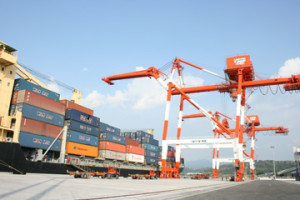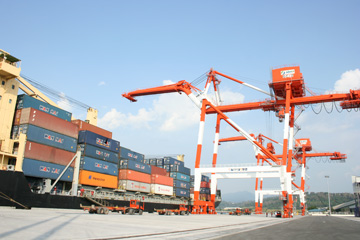
The Philippines needs a more aggressive campaign to modernize its seaports and solve their long-festering problems to grab a bigger slice of the international trade and tourism markets, according to a recent assessment of the country’s economic progress.
“The Philippines still ranks 120th out of 144 countries in Quality of Port Infrastructure of the WEF [World Economic Forum] Global Competitiveness Report-the lowest among the ASEAN-6 countries,” noted the Arangkada Philippines Second Anniversary Assessment, released last month.
The Arangkada Philippines Second Anniversary Assessment reflects the results of discussions among nearly 300 Filipino and foreign investors over a six-month span. It is a joint project of the Joint Foreign Chambers of the Philippines and the United States Agency for International Development.
To make the country’s marine transport more competitive globally, the paper made several recommendations intended to decongest the Manila ports, improve the national port system, and increase the use of ports outside the National Capital Region.
The study authors proposed a transportation master plan that will identify necessary infrastructure facilities and recommend sound, far-reaching transport policies. The plan should be comprehensive, consultative, and long-term, the authors stressed. It “should have a 10- to 20-year horizon. Immediate solutions are appealing, but there is a need to know where we are going.”
This blueprint will mandate linkages across the country to bolster connectivity and promote equitable economic growth. It should include an interconnecting highway between the North Luzon Expressway and South Luzon Expressway to facilitate access to the ports of Batangas and Subic. Another vital linkage needed is that between the Manila ports and NLEX.
Once completed, these thoroughfares can help shift container traffic from Manila to Subic and Batangas. The shift should be further encouraged with government policies that aim to attract industries to locate to these economic zones and make ships prefer calling at these outer ports.
With foreign cargoes diverted outside Manila, the Manila North Harbor can be converted into a domestic port and Manila South Harbor into a cruise port, the study recommends.
The government was also urged to ensure that major ports have the needed infrastructure, including cranes and handling equipment. Smaller ports must at least have weighing scales. “Many smaller ports still lack not only port facilities but the normally required equipment of the franchised port operators,” the publication observed.
At the same time, key domestic and international ports should invest in facilities to accommodate bulk and break-bulk cargoes to support the growth of the agriculture, mining, power, and similar vital sectors.
For roll-on-roll-off (RORO) ports, the study proposes to outfit them with modern passenger terminals, improve their intermodal connectivity, and enhance the experience of the riding public. The Batangas terminal-with its bus terminal, park-and-sail, and shuttle service within the port facility-is so far the only harbor in the country with extensive interconnectivity with land transport, the research team said.
“The identified tourism target areas must have the land, air, and sea hub and spoke infrastructure planned to support their growth,” it said.
Many of the recommendations suggested ways to cut transport and shipping costs, primarily through port upgrades that will reduce delays and cut the long waiting lines for trucks in Manila. Other proposed cost cutting-related measures are to make RORO bills of lading more transparent, remove unnecessary and unauthorized fees imposed on truckers and lift-on-lift-off cargo, and penalize local government units found charging illegal fees.
Transport policies and procedures that required modernizing as well were likewise mentioned in the study. The study team sought the privatization of port operations by the Philippine Ports Authority, and the activation of the National Port Advisory Council to delineate the powers of the PPA and other regulators. The approval of the draft omnibus maritime code should be a priority during the 16th Congress, it added. — PHILEXPORT News and Features
Image courtesy of Subic Bay International Terminal Corp





